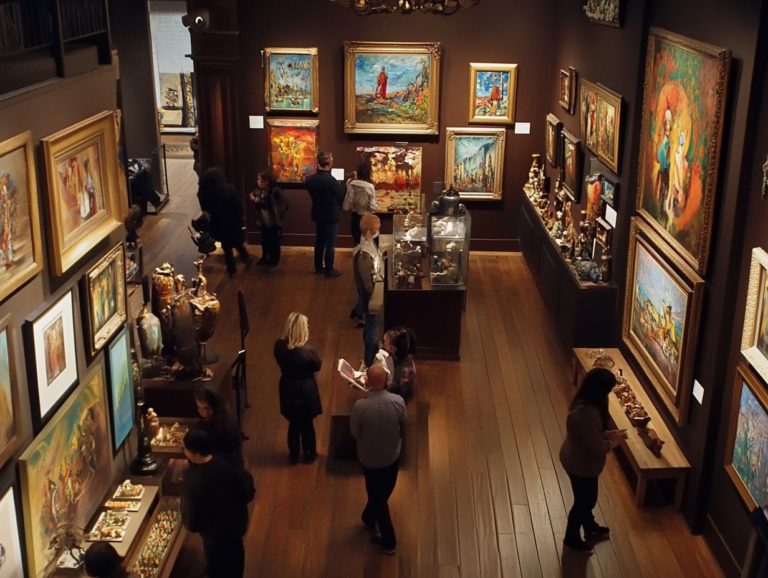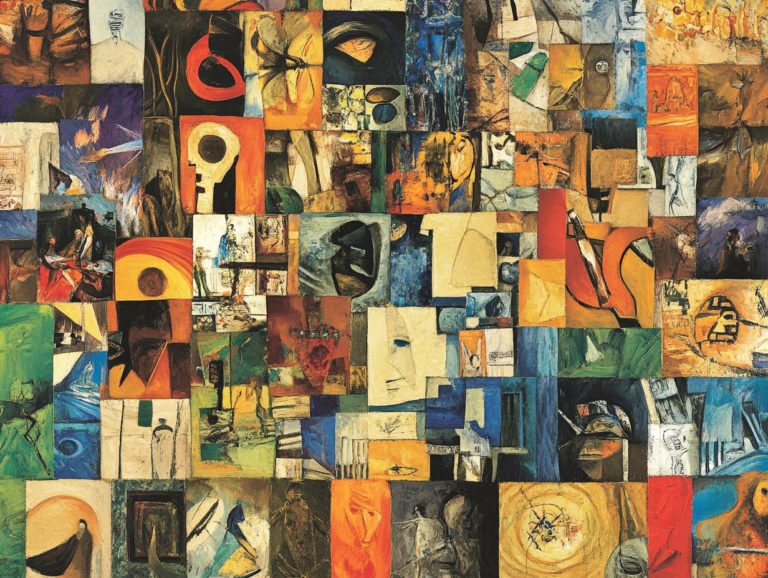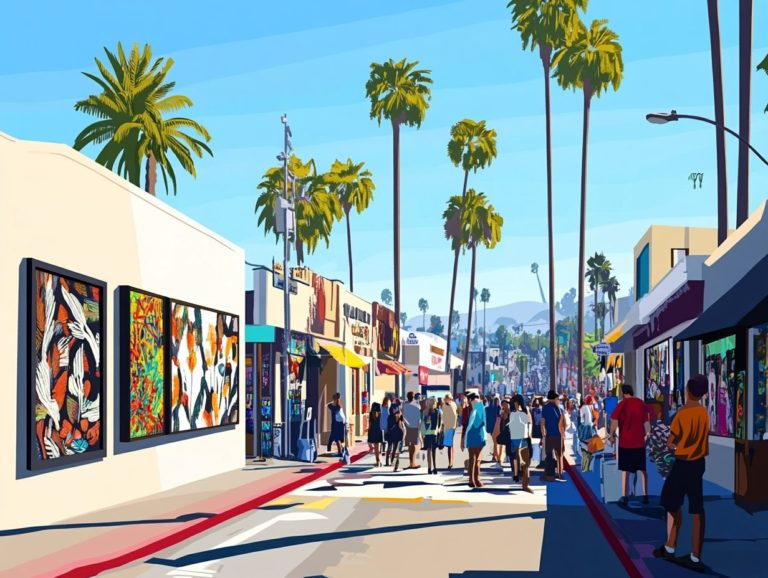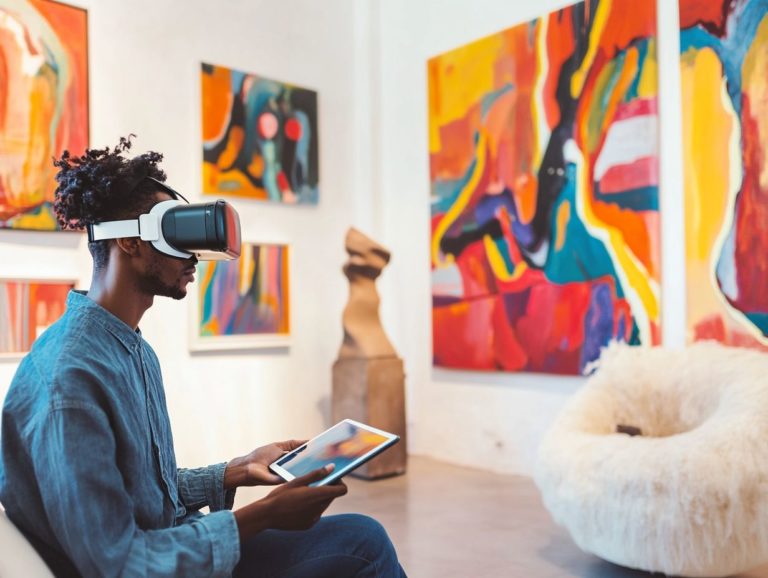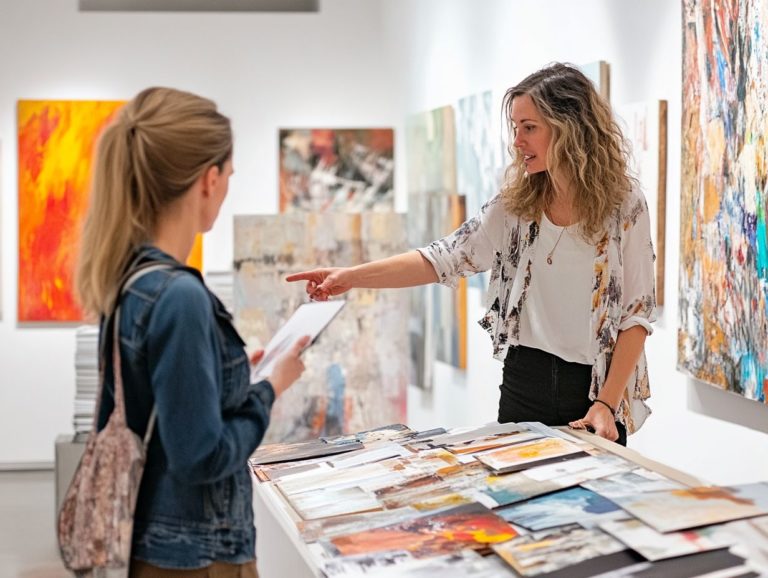Digital Collectibles: The Future of Art
Digital collectibles are redefining the art landscape, seamlessly blending creativity with technology. As advancements in digital art reshape your understanding of ownership and value, the emergence of non-fungible tokens (NFTs) presents both remarkable opportunities and significant challenges.
This article delves into the complexities of digital collectibles, illuminating their advantages, the controversies that accompany them, and their potential ramifications for the art industry.
Join us as we explore this captivating intersection of art and technology.
Contents
- Key Takeaways:
- The Advancements of Digital Art
- The Rise of NFTs
- Benefits of Digital Collectibles
- Challenges and Controversies
- Exciting Trends in Digital Collectibles
- Frequently Asked Questions
- What are digital collectibles and how do they relate to art?
- What makes digital collectibles the future of art?
- How do digital collectibles benefit artists?
- What are the benefits of owning digital collectibles?
- What impact do digital collectibles have on the traditional art market?
- Are there any downsides to digital collectibles?
Key Takeaways:
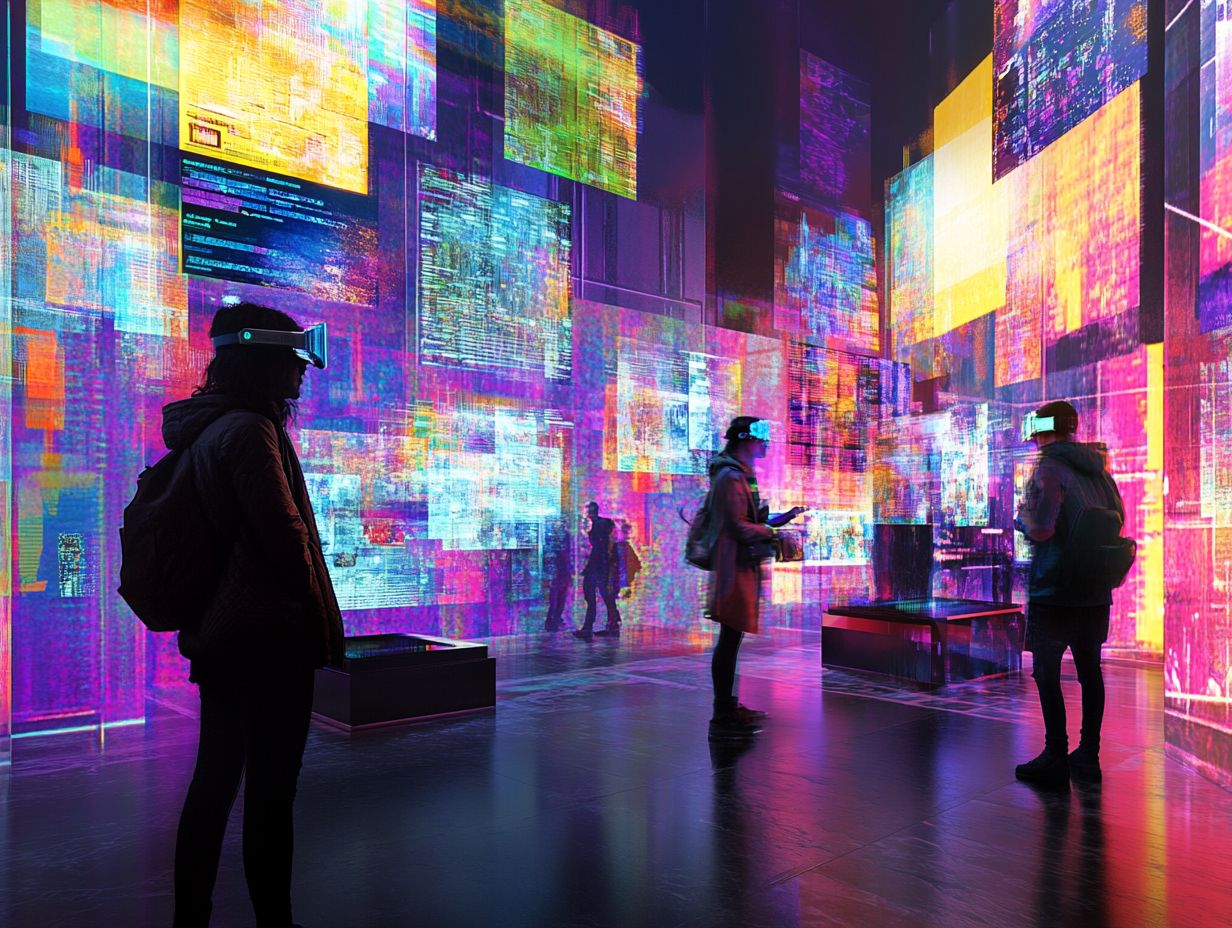
Digital collectibles are unique digital assets, such as NFTs, that are gaining popularity in the art world.
Advancements in technology have allowed for new forms of digital art, creating a shift in the traditional art market.
The rise of NFTs offers benefits such as accessibility and ownership for artists and collectors, and has the potential to revolutionize the art market.
What are Digital Collectibles?
Digital collectibles are unique digital assets that have transformed the way you think about ownership and trading in the art world. This transformation is made possible by the rise of NFTs (Non-Fungible Tokens) and blockchain technology.
These groundbreaking innovations allow you, as an artist or collector, to participate in a decentralized marketplace where the authenticity and history of ownership of digital art are verified with unmatched transparency and security.
These collectibles aren’t just digital images; they’re unique creative expressions that can possess significant value. Platforms like OpenSea and Nifty Gateway serve as vibrant marketplaces where you can explore an extensive array of digital art pieces and collectibles.
In these dynamic environments, ownership takes on a whole new meaning. Each NFT represents uniqueness and individuality, enabling you to trade these assets with ease.
This ecosystem helps artists shine and creates a buzz among enthusiasts, bringing together people who appreciate and invest in one-of-a-kind digital creations.
The Advancements of Digital Art
Advancements in digital art, especially through the use of NFTs and blockchain technology, present you with exceptional opportunities to showcase your work and connect with a global audience.
These innovations have revolutionized the creation, ownership, and trading of digital art, cultivating a dynamic community centered around the idea of unique digital ownership.
How Technology is Changing the Art World
Technology is profoundly transforming the art world. Blockchain and NFTs offer you remarkable transparency and security in your transactions.
This shift enhances the reliability of art ownership and fosters community engagement through interactive events and peer-to-peer trading.
Platforms like OpenSea and Nifty Gateway have emerged as leading NFT marketplaces. They enable you to effortlessly mint and sell your digital artwork.
By embracing these innovations, you can reach wider audiences, while collectors gain unprecedented access to unique pieces.
These platforms foster collaboration among artists and fans, cultivating vibrant communities where creativity thrives. The unique features of NFTs like provenance tracking and smart contracts create a trustworthy ecosystem, assuring collectors about their investments while providing you, the artist, with new avenues for monetization.
The Rise of NFTs
The emergence of NFTs signifies a pivotal shift in the world of crypto art and digital assets, enabling you as an artist and redefining what ownership means in the digital landscape.
By harnessing the capabilities of the Ethereum blockchain, NFTs allow you to trade unique creations across diverse platforms. This fosters a vibrant marketplace that appeals to both seasoned art collectors and emerging talents eager to establish their presence.
Dive into the world of digital collectibles today!
Understanding Non-Fungible Tokens

Non-Fungible Tokens (NFTs) represent unique digital ownership and stand apart from cryptocurrencies like Bitcoin, as they can’t be exchanged on a one-to-one basis. This distinctiveness allows NFTs to encapsulate ownership of digital art and collectibles, offering artists innovative revenue streams through sales and royalties.
At their essence, NFTs use blockchain technology, acting as a decentralized ledger that authenticates and tracks ownership. Unlike regular tokens, each NFT holds unique information, making it impossible to swap one for another without losing its specific value.
This uniqueness enables creators to establish provenance while allowing collectors to invest in verifiable, one-of-a-kind items. As the market evolves, artists are increasingly tapping into the potential of royalties embedded in smart contracts, ensuring they receive compensation every time their work is resold.
This transformation influences the art ecosystem, paving the way for new financial sustainability while raising questions about copyright and the long-term viability of the market.
Benefits of Digital Collectibles
Digital collectibles present an array of advantages that are reshaping ownership and investment in art, including unique collectibles that open new revenue streams for artists through royalties, allowing them to benefit from their work long after the initial sale.
These unique digital pieces offer exciting investment opportunities. They also create a vibrant community among art enthusiasts, connecting like-minded individuals and fostering deeper engagement.
Accessibility and Ownership
Accessibility in the NFT marketplace opens the door for you to own unique digital art pieces, truly democratizing art ownership. This transformation enables you as an artist and allows you, the art collector, to engage with diverse works that were once out of reach due to high price tags or scarcity.
With innovations like fractional ownership, you can invest in portions of high-value artworks. This makes it possible for a broader array of participants to dive into the digital art ecosystem. User-friendly platforms streamline this process, significantly lowering barriers so that even those who aren’t particularly tech-savvy can navigate the NFT space with ease.
As a result, both you and the artists reap the rewards! Artists gain access to new revenue streams, while you enjoy a more inclusive and varied portfolio. This fosters a vibrant community that thrives on collaboration and shared ownership, enriching your experience in the digital art world.
Revolutionizing the Art Market
The introduction of NFTs is revolutionizing the art market, enabling you to explore digital assets that achieve unprecedented trading volumes and high-profile sales that command global attention! This transformation isn’t just changing art’s value; it’s revolutionizing how you experience it today!
When you consider landmark transactions like Beeple’s astonishing sale of an NFT artwork for $69 million, it becomes clear that both artists and collectors are reevaluating the boundaries of creativity and ownership.
Traditional galleries and auction houses are now seamlessly integrating NFTs into their offerings, recognizing the potential of digital artworks to attract fresh audiences, enhance investment portfolios, and create groundbreaking experiences.
As this landscape evolves, you’ll notice a significant shift in market trends, with institutions adapting to incorporate these digital assets. This makes NFTs an essential element of contemporary art discourse and commerce that you won t want to overlook!
Challenges and Controversies
In the promising realm of NFTs and digital collectibles, you ll encounter a range of challenges and controversies, especially regarding environmental sustainability and regulatory uncertainty.
As the art world navigates these complexities, pressing questions about authenticity and copyright inevitably arise.
Dive into the implications and discover how digital ownership is transforming everything! It s crucial for you to gain a nuanced understanding of this evolving landscape.
Environmental Impact
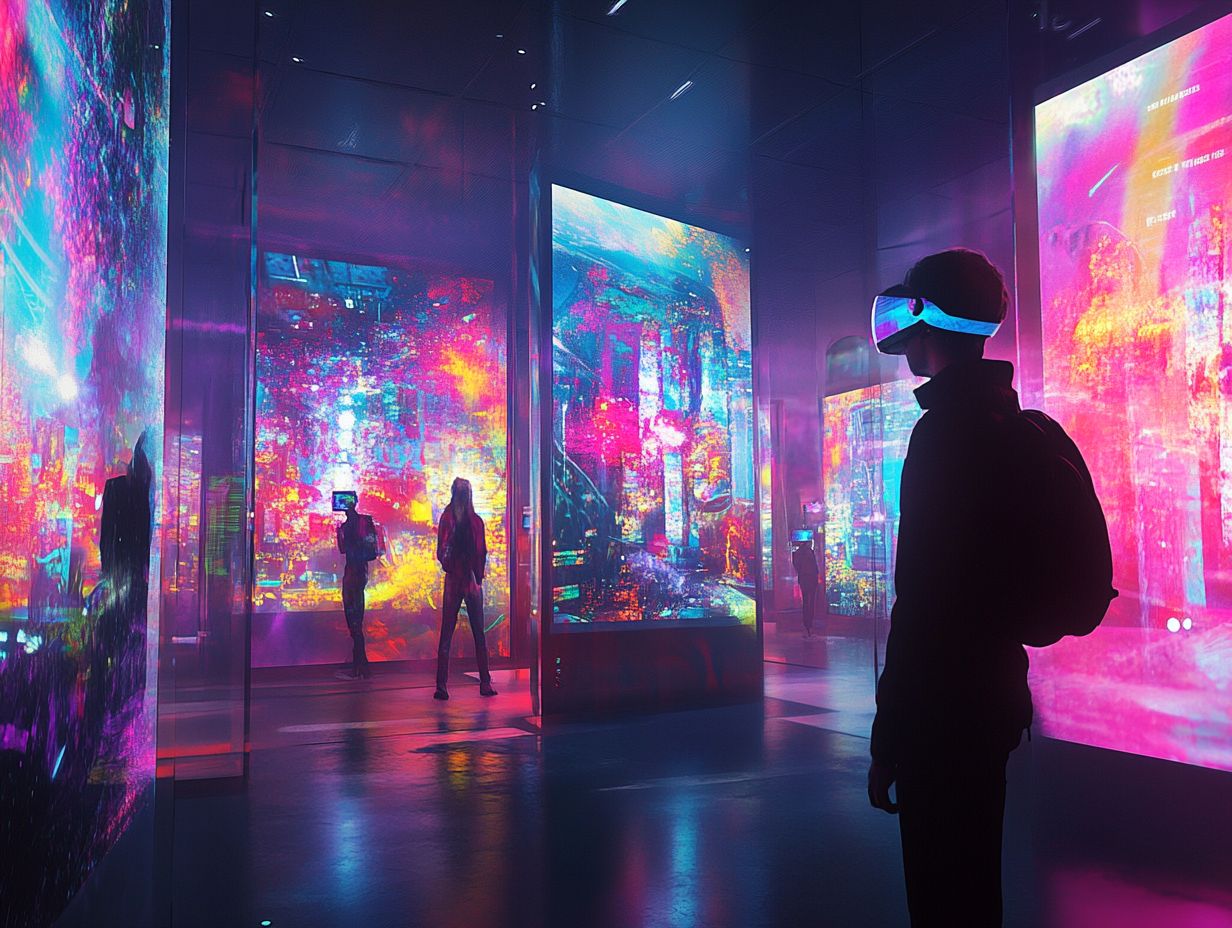
The environmental impact of blockchain technology, especially regarding NFTs, has ignited considerable debate within the art community. Critics assert that the energy consumption tied to minting and trading NFTs threatens sustainability. There is an urgent need for greener alternatives.
As discussions unfold, many artists and collectors are becoming increasingly aware of the carbon footprint associated with digital transactions. People are increasingly concerned about the energy-intensive proof-of-work systems, which raises alarms about climate change.
In response to this criticism, innovative efforts are emerging to implement eco-friendly blockchain solutions. Proof-of-stake allows users to validate transactions based on the number of coins they hold, using significantly less energy. Artists are actively seeking platforms that prioritize sustainability. Collectors are beginning to place greater value on the environmental integrity of their acquisitions.
The conversation highlights a growing agreement within the NFT community about the critical need for responsible practices moving forward.
Authenticity and Copyright
Authenticity and copyright issues surrounding NFTs have stirred up intricate questions in the art world. As you navigate this new landscape of ownership, it’s essential to understand how artists strive to protect their digital assets.
NFTs offer a level of authenticity by verifying ownership through blockchain technology. However, copyright concerns persist, posing challenges for the community. This dynamic invites closer examination of how digital creators can effectively assert their rights in this rapidly changing environment.
While blockchain provides verifiable records and unique ownership, it opens the door to potential legal loopholes that could undermine these protections. If someone mints an NFT of an existing artwork without proper authorization, it complicates the situation for both creators and collectors.
As the NFT market continues to evolve, staying vigilant and informed is crucial. This ensures that artists can safeguard their creations while contributing to a thriving digital art ecosystem.
Exciting Trends in Digital Collectibles
Get ready! The future of digital collectibles is bursting with potential as ongoing technological advancements reshape the art industry and broaden investment opportunities.
With NFTs and blockchain technology becoming increasingly mainstream, you re on the brink of witnessing the emergence of new art forms and enhanced community engagement, poised to grow exponentially.
Potential Impact on the Art Industry
The potential impact of digital collectibles on the art industry is truly significant. They encourage investment in innovative digital art forms and foster a sense of community among collectors and enthusiasts.
This evolution paves the way for a more interconnected and diverse art market, thriving on technological advancements.
As these digital assets gain traction, they reshape interactions with artists and fellow collectors, creating a seamless space for buying, selling, and trading art across virtual platforms. This new paradigm transforms traditional investment dynamics, enabling artists to connect directly with wider audiences while bypassing conventional gatekeepers.
It invites traditional art institutions to reassess their roles and adapt to this shifting landscape, ensuring they stay relevant in an era where creativity and technology are intertwined.
By embracing these innovations, the art world can unlock fresh opportunities for collaboration and expression, ultimately enriching the artistic dialogue you engage with.
Frequently Asked Questions
What are digital collectibles and how do they relate to art?

Digital collectibles are unique digital assets that can be bought, sold, and traded on the blockchain. They are a form of digital art that can be owned and verified by the buyer, making them valuable and collectible.
Have more questions about digital collectibles? Drop them in the comments!
What makes digital collectibles the future of art?
Digital collectibles represent the future of art. They simplify ownership and verification, making art accessible to more artists and buyers, as explored in the future of collectible art in the digital age.
These collectibles can also increase in value over time, turning them into valuable investments.
How do digital collectibles benefit artists?
Artists can now earn money from their work and reach a global audience. They gain more control over their creations and earn royalties each time their collectible is sold.
What are the benefits of owning digital collectibles?
Owning digital collectibles offers a more interactive experience with art. They can increase in value and are easily traded or sold in digital marketplaces.
What impact do digital collectibles have on the traditional art market?
Digital collectibles are shaking up the traditional art market by providing a new platform for artists and buyers. They offer a more affordable option for art collectors and contribute to the rise of collectible art investments, helping make art accessible to more people.
Are there any downsides to digital collectibles?
One downside is the environmental impact of the technology used to create and trade them. There s also a risk of fraudulent or stolen digital artwork, although the secure technology helps prevent this.

